Sometimes, you want a switch in your house to turn on or off automatically. Maybe you want to deter burglars while you’re out of town. Maybe you get up at the same time every day and don’t like fumbling in the dark every morning. Or maybe you just want the convenience of lights at times when you know you’re going to be home.
Whatever your reasons, an automated light switch timer is one solution to this problem. We’ll be giving you an in-depth review of three of the top models that money can buy. But first, here’s a quick overview of your options, and what you should keep in mind while you’re deciding.
Different Light Switch Timer Types
If you remember the dark, prehistoric decade of the 1990s, (when dinosaurs roamed the Earth) you’ve probably seen mechanical timers. These were timers that could be plugged into a power outlet, and used to power various devices. They were particularly popular with frequent travelers, since they could be used to turn a few lamps on and off while you were away. Typically, they worked by inserting sets of pins into a rotating dial. As the dial turned, the pins would flip the switch on and off.
Similarly, mechanical bathroom timers have been around for a long time. Turn a dial, and the switch will activate, typically for anywhere from 5 minutes to an hour. They’re often used to control bathroom fans, and also infrared lamps in hotels. However, there aren’t a lot of other useful applications for them.
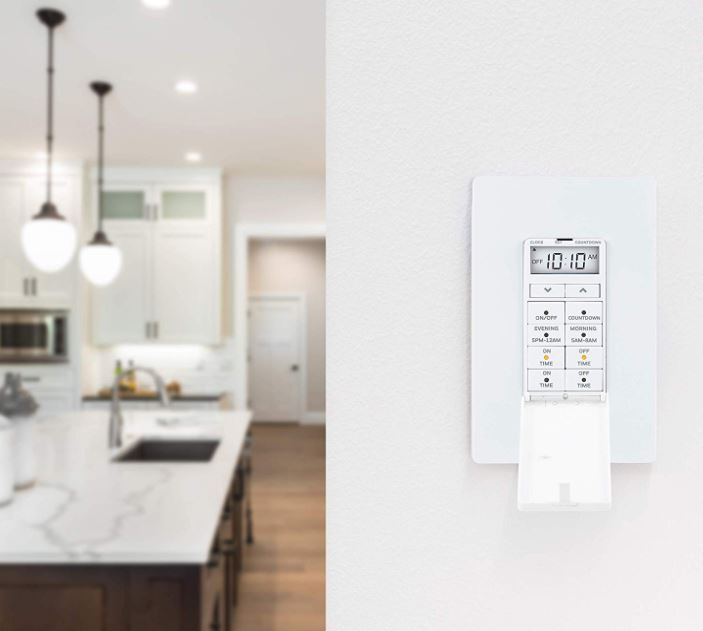
Digital timer switches are simply the next evolution of this technology. Much like a mechanical bathroom timer, they take the place of a wall light switch. And much like a mechanical plug-in timer, they allow you to turn your lights on and off on a schedule. But a mechanical timer has some limits. A single, 24-hour dial only lets you set a single schedule. With an automated light switch, you can typically set a separate schedule for weekends, or even a 7-day schedule. This is the type of switch we’re looking at today.
Note that this is not the same as a smart switch. We’ve reviewed smart switches in the past, and there are some good ones on the market. They typically offer app control, sometimes motion detection, night lights, and other similar “extras”. Some of them give you the ability to set a timer, and others don’t.
Factors to Consider
Now that we know what we’re looking at, let’s talk features. To begin with, you need to know how many watts your circuit requires. If your switch controls a single ceiling light, it’s unlikely that you’re going to have any problems. However, many people use automated light switch timers for an entire room. They can even be used for circuits that control a row of kitchen appliances.
This is useful if you want to shut those outlets off overnight to save phantom power. But in these higher-wattage situations, you’ll want to check and double-check your features.
Another important thing to think about is what types of lights or appliances you’re powering. Any switch can power an older incandescent bulb. But CFL and LED bulbs have different requirements. You’ll also need to be aware that most switches don’t support dimmers. Finally, some light switch timers aren’t suitable for motors. This is because electric motors have a “peak wattage”, where the wattage spikes when they turn on. A switch may be able to handle the ordinary wattage just fine. But it will still need to be capable of handling the peak wattage.
Finally, be aware that not all lighting circuits are the same. For example, there are three-way circuits, with switches on both ends of the room. There are even four-way circuits, where there are three switches controlling the same light. While any automated light switch will work on a standard single-switch circuit, not all of them support multi-way circuits.
Honeywell Daysmart
The Honeywell Daysmart is an in-wall timer switch that has a flip-open cover. This gives it a cleaner look than your typical electric timer, since all the buttons are hidden. At first glance, it looks like an ordinary wall plate, at least once it’s been installed. It ships with 2 different face plates: a white and an almond. As a result, it will easily match the vast majority of wall plates on the market. When you open the cover, you’ll see a small digital LCD display that shows the current time.
Beneath, there’s a set of three menu buttons that can be used for navigation. Under those, there are a set of eight additional controls which control the basic timer functions. When you’re choosing options for a particular timer mode, an LED will illuminate on that mode’s button. This eliminates a lot of potential confusion, making the Daysmart easier to learn than some competitors.
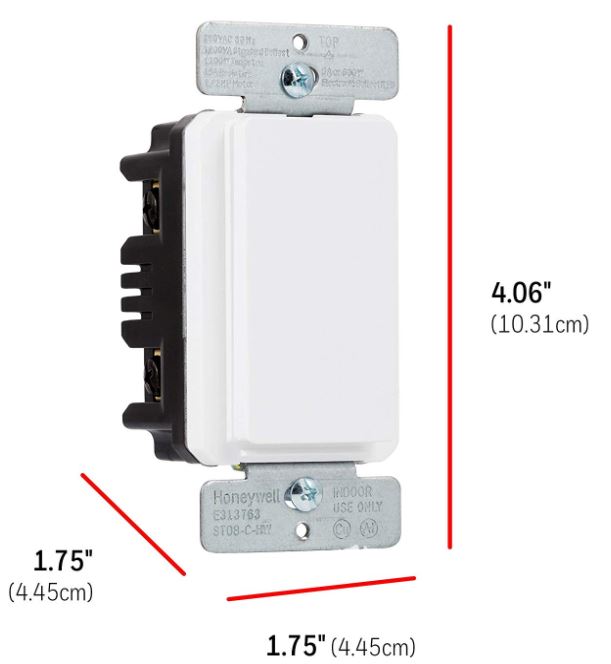
When it comes to compatibility, the Daysmart is about average. It’s compatible with LED, CFL, incandescent, and halogen bulbs, which covers just about all types. However, it’s not compatible with dimmable bulbs, nor does it support appliances. It’s designed for a 120-volt, 60Hz current, which is standard for the US. The current is also a standard 15 amps. That said, we still wouldn’t use the Daysmart to control a light that’s plugged into an outlet. There’s too much risk of someone accidentally plugging in a vacuum or something and damaging the switch. It does support three-pole switches, though, so it can be used in hallways and other similar scenarios.
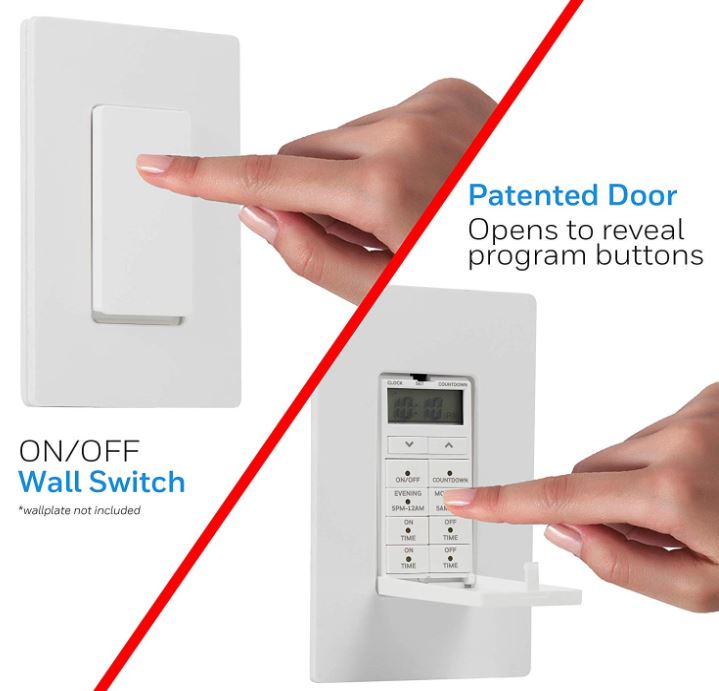
You get several different timer buttons, so let’s take them in the most logical sequence. The first button is a simple on/off button, which can be used to override the current programming. Pressing the button a second time will return the Daysmart to its ordinary operation.
The next button is the special sunrise-sunset mode that gives the Daysmart its name. When this mode is active, the Daysmart will automatically turn your lights on at sunset and off again at sunrise. This feature is probably not going to be useful for most households. But it’s great for apartment vestibules and other public spaces that are brightly-lit during the day. To use this mode, you’ll need to enter your latitude and longitude. This is so the Daysmart will know what your local sunrise and sunset times are.
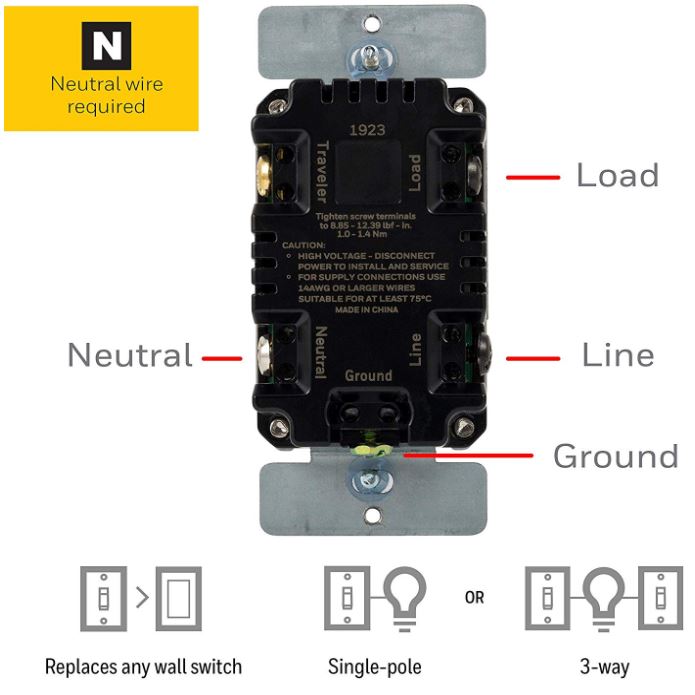
The next two buttons allow you to set the 7-day timer. Pressing either the “On Time” or “Off Time” buttons will cause the days of the week to appear on the screen. Use the arrow buttons to select what day you want, and select it with the menu button. Then the time will start flashing. Using the arrow buttons again, select the time you want the switch to turn on or off.
The “Sunset On” and “Sunrise Off” buttons let you set the switch to work in sunrise-sunset mode on particular days. This can be useful for businesses that operate only on weekdays. Finally, there’s a button for Countdown mode. In this mode you can select a particular time where the lights will turn on or off just once. This is great for porch lights, since you can set them and forget about them.
myTouchSmart In-Wall Digital Timer
The MyTouchSmart In-Wall Digital Timer has a more traditional design than the Daysmart. The buttons and LCD display are always exposed, with no cover. They’re not unattractive, though, and the LCD doesn’t have any backlight to disturb your sleep. There’s a row of three LED lights on each side, next to each of the buttons. When you press one of the buttons to set the timer, the corresponding LED will illuminate. This only happens while you’re setting the timer, and helps you keep track of what you’re doing. There are also a pair of arrow buttons just under the LCD display, for navigating timer menus.
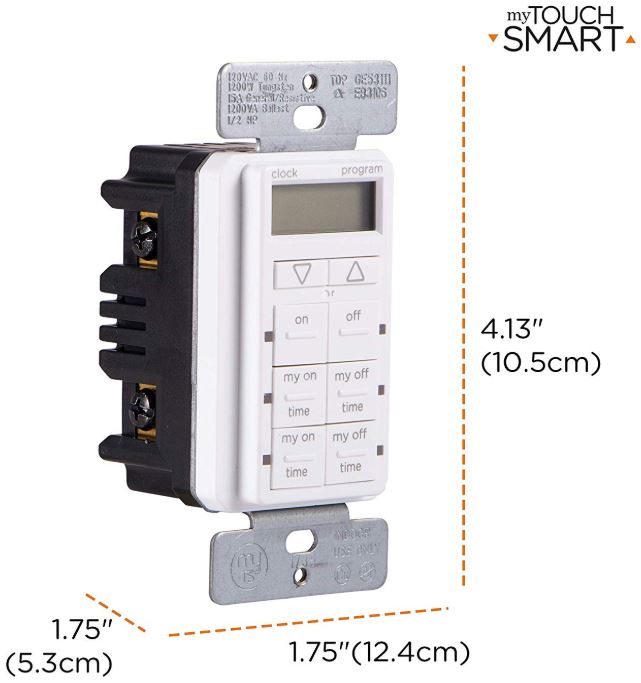
The MyTouchSmart is designed to work with a wide variety of devices. Not only is it compatible with almost any lightbulb, including LED, CFL, incandescents and halogens, but it also supports dimmable LEDs and CFLs. It also works for motors. This can either mean or exhaust fans, outdoor lights, or even kitchen appliances. The switch is rated for standard US voltage of 120 volts and 15 amps at 60 Hz. It can support up to 1200 watts, which is generally less than you’ll draw at a full 15 amps. Still, you’ll be able to run a few fans without any problems.
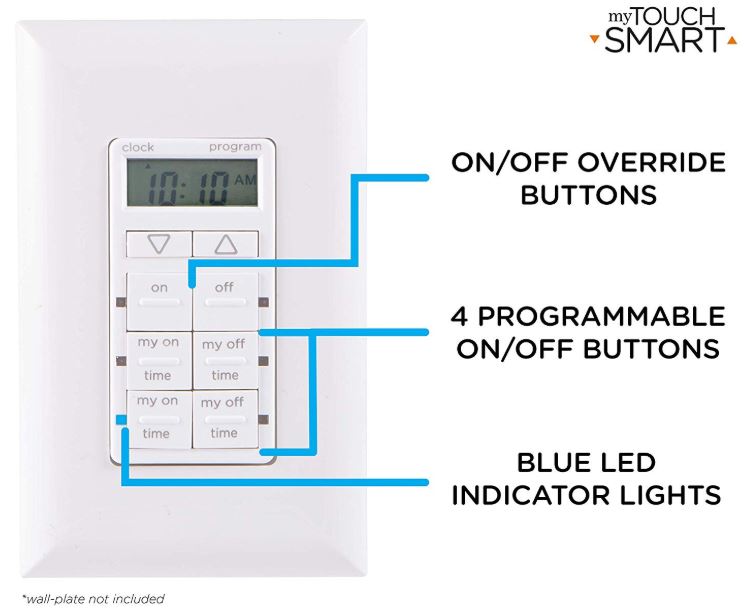
While the MyTouchSmart offers more device support, the timer functions themselves are a little simpler than those on the Daysmart. To begin with, the top two buttons are overrides for turning the switch on and off respectively. When neither of these buttons is active, the MyTouchSmart will operate according to its normal programming.
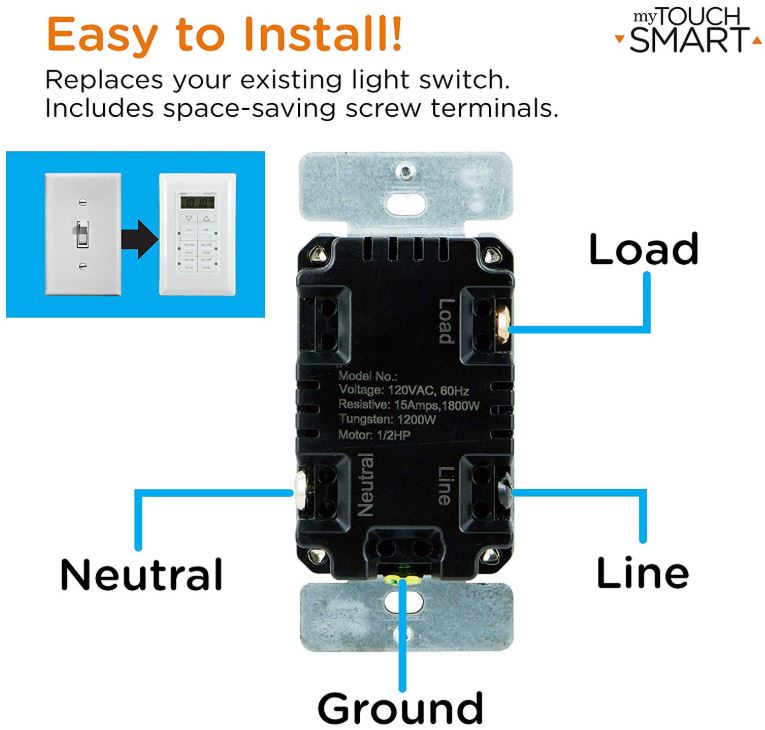
Beneath that, you’ll find a set of four buttons, for setting two separate timers. These timers will operate every day as long as they’re active. So you can set your kitchen fan to turn on in the morning, and off when you leave for work. Then you can set the second timer to turn it back on when you get home, and off at bedtime. Easy!
Honeywell Econoswitch
The Honeywell Econoswitch has a much more minimalistic design than the last 2 timers we looked at. Instead of several large buttons, there are two slim ones just beneath the LCD screen.
There’s also a larger one that works as a touchpad-style slider. At the bottom right corner, there’s a blue LED that lets you know when the switch is active. The learning curve is very shallow, since the controls are contextual and pretty intuitive. In addition, the screen comes with an attractive option. Instead of being automatically backlit or not, you get the choice. In the menu, you can leave it off, turn it to a low-intensity night light setting. You can even turn it up very high in an emergency.

The Econoswitch is compatible with most lightbulb types. In addition to LED, CFL, incandescent, and halogen, it’s also compatible with fluorescent tube ballasts. It’s also compatible with appliances. At a US-standard 120 volts and 15 amps, it can deliver 1800 watts of power. This will give you enough starting wattage to power a 1500-watt, 15-amp device. It also means that you can safely use the Econoswitch to power a light that’s plugged into an outlet. Anything that someone could plug in and damage the switch will trip a 15-amp breaker, so you’re safe. And the Econoswitch also comes with a 1-year manufacturer’s warranty for added protection.
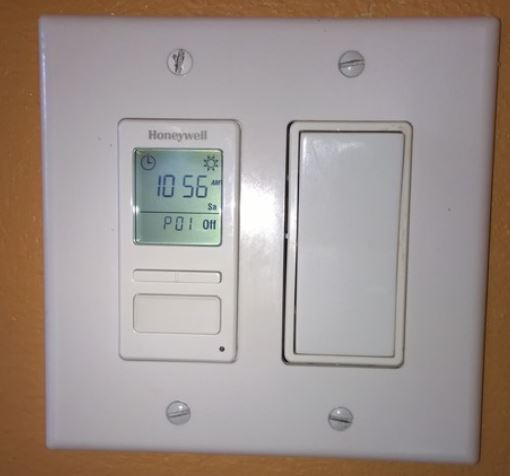
The Econoswitch has several different modes, so let’s start with the most basic. By clicking the large control at the bottom, you can instantly turn your switch on or off. In addition, you can cycle through the menu to set individual on and off times for particular days of the week. Or, if you prefer, you can set a single schedule for all seven days. You can either set a particular time – for example, 9 AM – or select sunrise or sunset. This will require you to enter your latitude and longitude, so the Econoswitch can determine your local times. So far, this works similarly to the Daysmart’s sunrise-sunset feature.
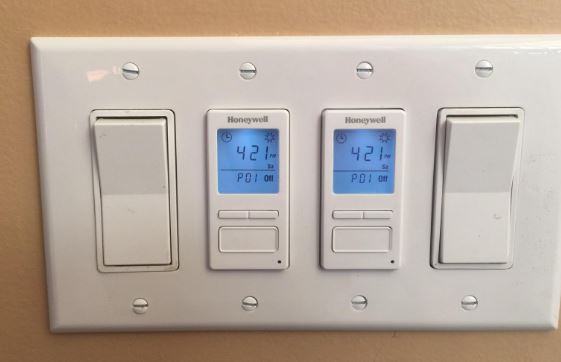
However, the Econoswitch has a few extra tricks up its sleeve. For one thing, it automatically keeps track of Daylight Savings Time, making one less device you need to adjust. It also allows you to set the lights to change up to one hour before or after sunrise or sunset. If you’re lawn is shady, or if your picture window faces right into the morning sun, you’ll appreciate this feature. Finally, the Econoswitch also offers a “random” mode. This mode does exactly what it sounds like. Your lights will turn on and off completely at random, which will make it look like people are home. Because this is such a good theft deterrent, we think of it as “security mode”.
Final Verdict
Now that we’ve examined each of these automated light switch timers, it’s time to decide which is the best. If you’re looking for the best by numbers alone, it’s hard to argue against the Honeywell Econoswitch. That little beast does everything. The sunrise-sunset mode is fully featured, with the very convenient ability to offset your times a little. The seven-day timer is common enough, but still much appreciated. However, the best thing of all is the random mode. If you’re at all concerned about home security, you’ll appreciate being able to deter thieves while you’re on the road.
That said, the MyTouchSmart has a lot to offer at a very reasonable price. Most switches in this price range don’t have many features, and it’s nice to see one that supports appliances. Then again, your timer options are limited, and there’s no seven-day feature.
Finally, the Honeywell Daysmart offers its own kind of value. It’s almost as affordable as the MyTouchSmart, and it offers a sunrise/sunset feature. That’s virtually unheard-of, and it’s one of Honeywell’s most impressive offerings. It also offers a seven-day timer, so you can be fully prepared for weekends. That said, it doesn’t support appliances.
Meet Ry, “TechGuru,” a 36-year-old technology enthusiast with a deep passion for tech innovations. With extensive experience, he specializes in gaming hardware and software, and has expertise in gadgets, custom PCs, and audio.
Besides writing about tech and reviewing new products, he enjoys traveling, hiking, and photography. Committed to keeping up with the latest industry trends, he aims to guide readers in making informed tech decisions.


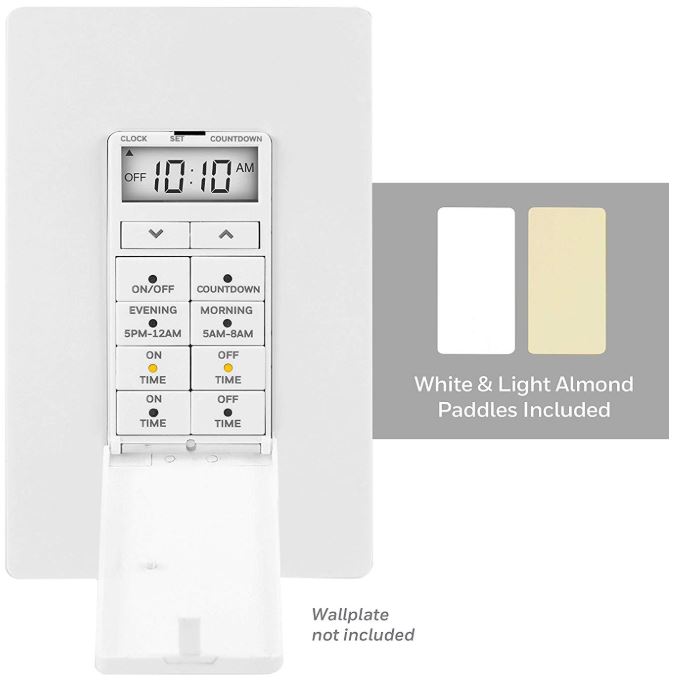
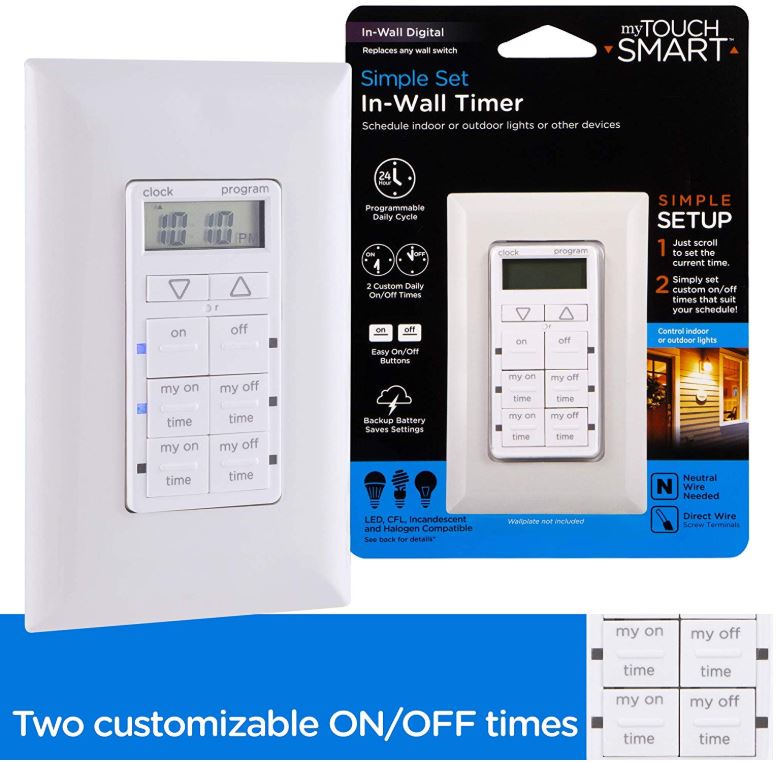
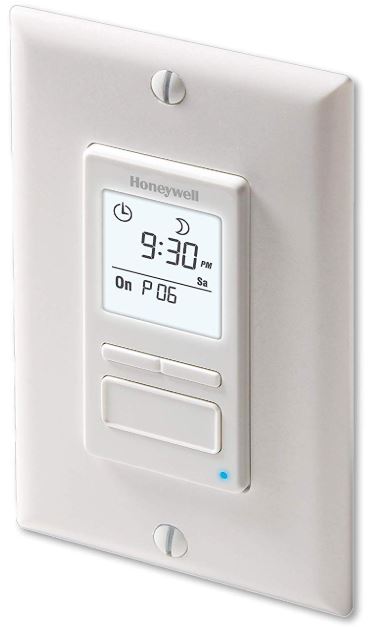
Fantastic post. Thank you! Made it easy to choose the right one to buy.